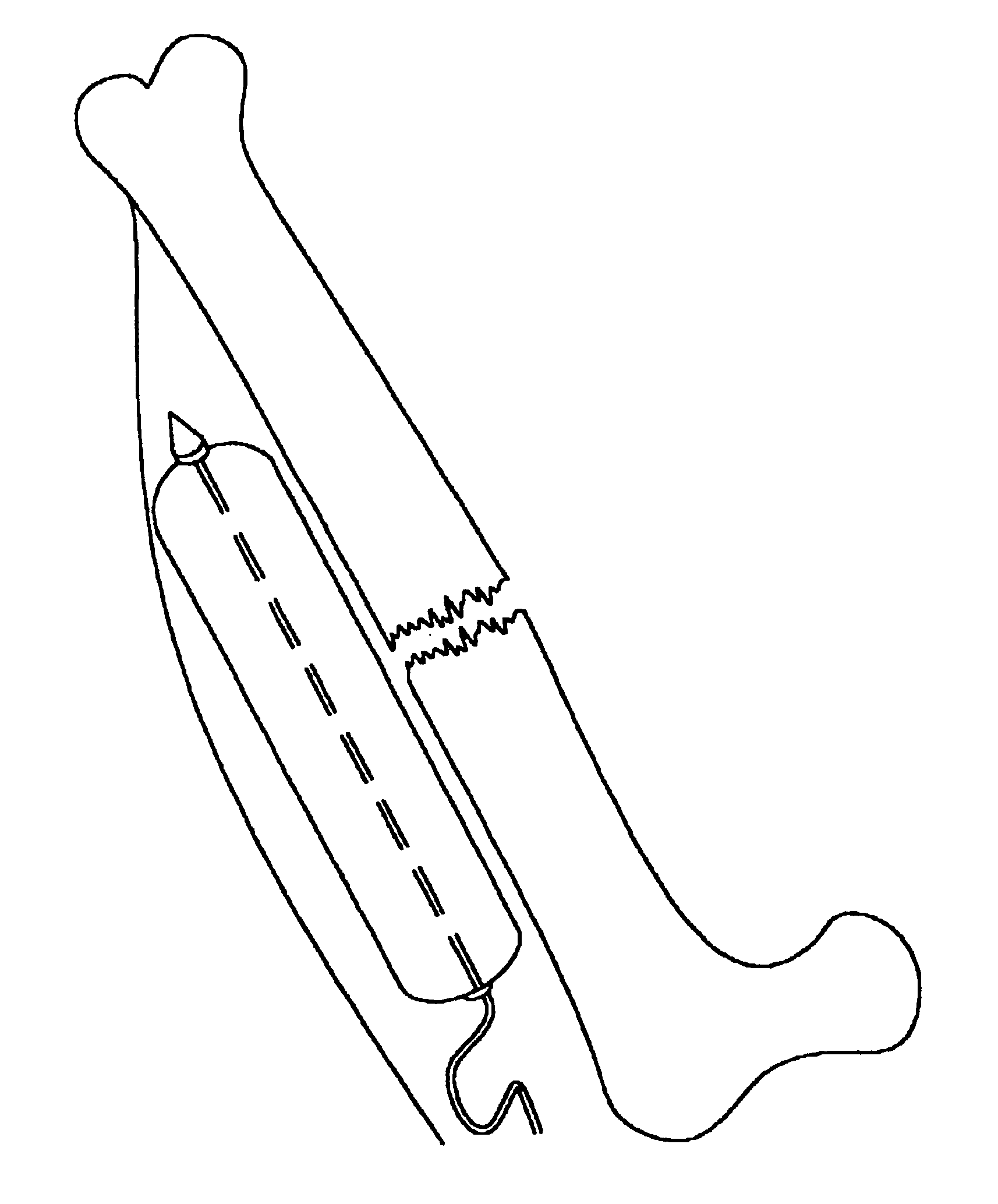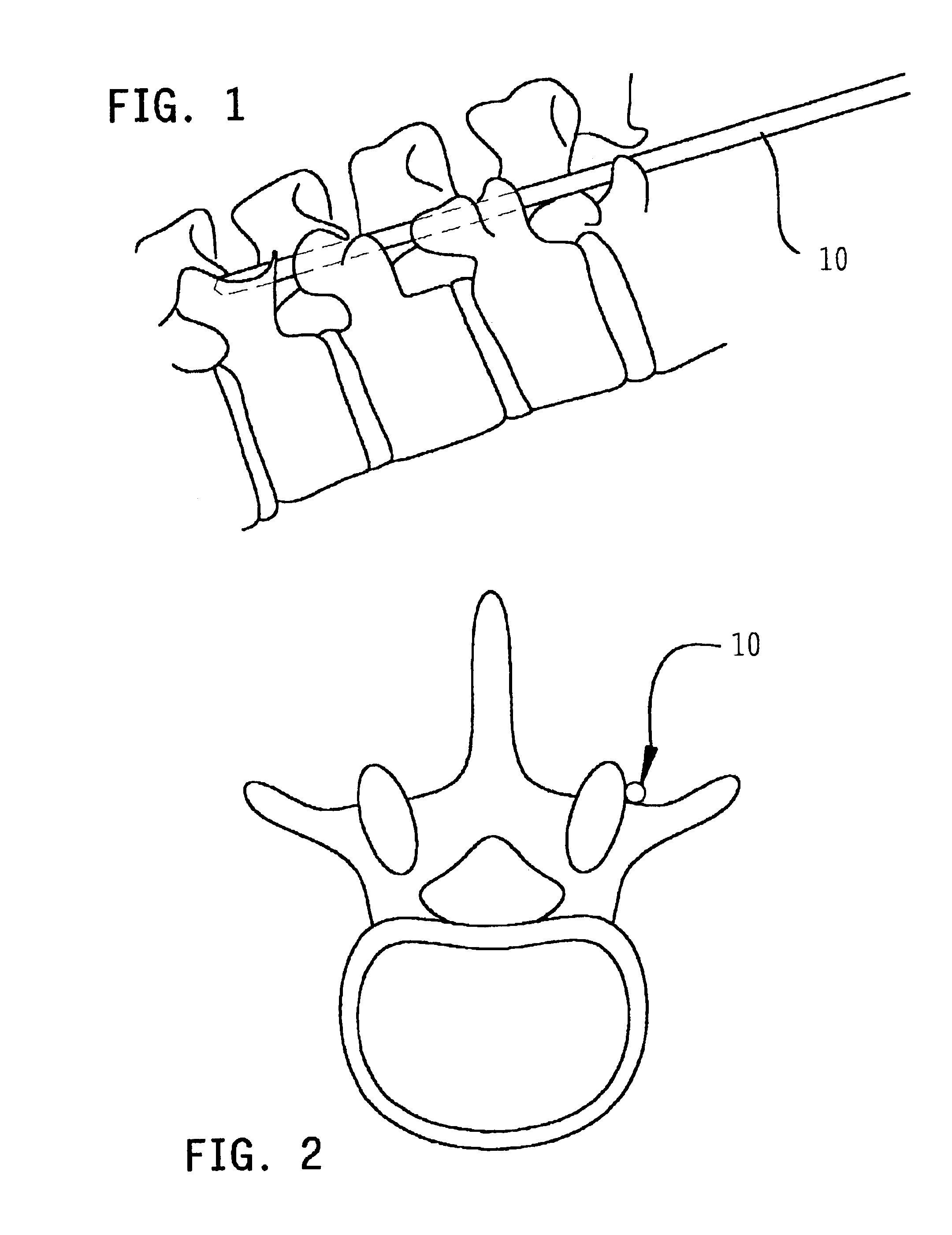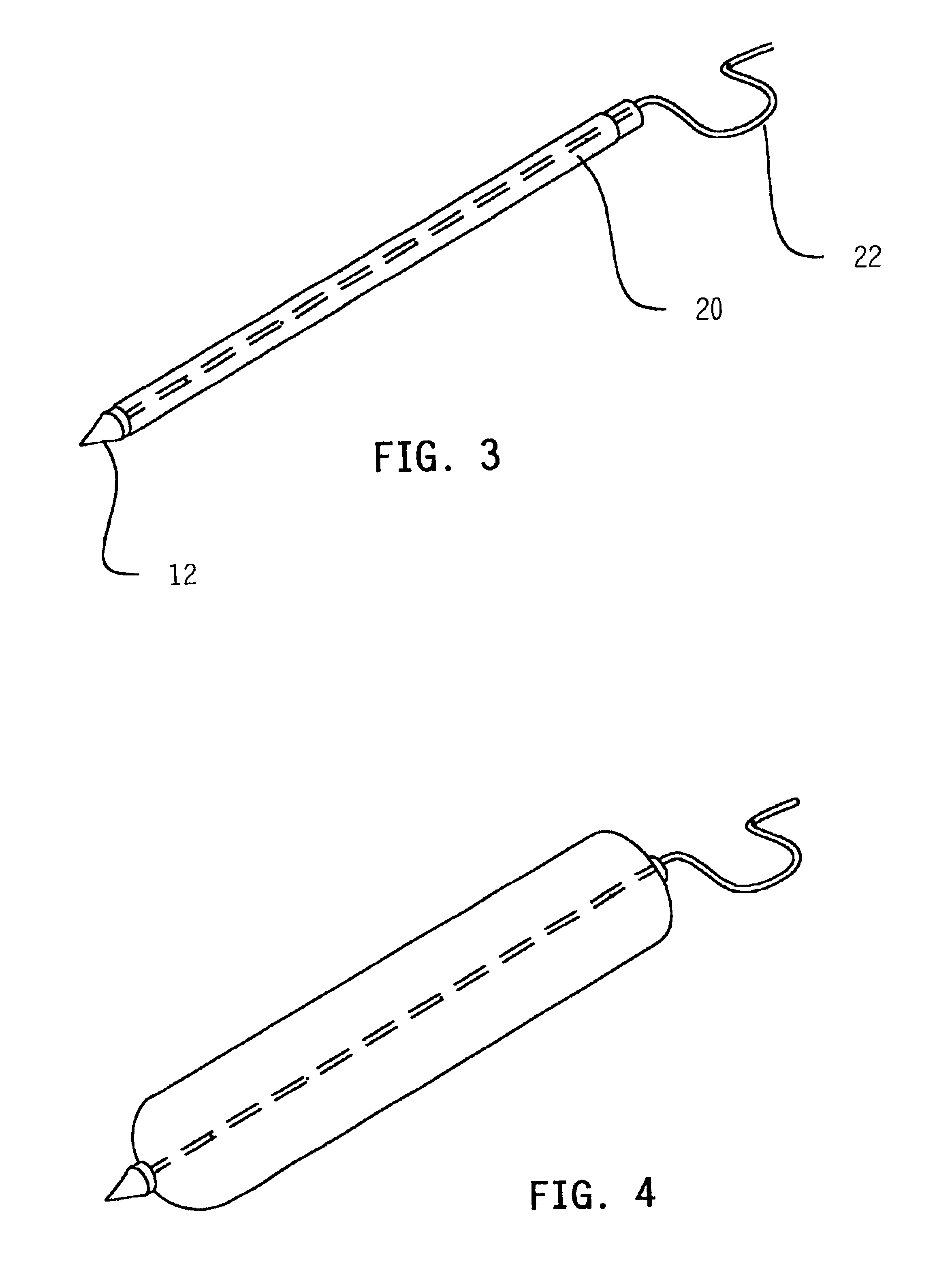Percutaneous tissue dissection
a percutaneous tissue and tissue technology, applied in the field of surgical methods, can solve the problems of disc herniation or protrusion, traumatic dissection process, and various problems, and achieve the effect of less trauma, long incision and traumatic dissection process
- Summary
- Abstract
- Description
- Claims
- Application Information
AI Technical Summary
Benefits of technology
Problems solved by technology
Method used
Image
Examples
Embodiment Construction
A malleable metal cannula 10 having an internal stylet 12 is first inserted into the body percutaneously (FIG. 1) and is guided fluoroscopically until the cannula lies along either the lamina of the transverse processes or the spinal elements to be fused (FIG. 2). The stylet is then removed, leaving the cannula in place. A generally cylindrical inflatable balloon 20 (FIG. 3), having an inflatable length approximating the distance between the vertebrae to be fused, is then inserted through the cannula.
The cannula 10 is then partially withdrawn, leaving the balloon in place along the spinal elements (FIG. 5). Next, the cylindrical balloon 20 is inflated (FIGS. 4, 6) by passing air or gas under pressure to the balloon via conduit 22. The expansion of the balloon elevates and dissects the muscle from either the lamina or the transverse processes, depending on the desired site for fusion. Once the muscle has been sufficiently separated from the bone, the balloon 20 is deflated and slid o...
PUM
 Login to View More
Login to View More Abstract
Description
Claims
Application Information
 Login to View More
Login to View More - R&D
- Intellectual Property
- Life Sciences
- Materials
- Tech Scout
- Unparalleled Data Quality
- Higher Quality Content
- 60% Fewer Hallucinations
Browse by: Latest US Patents, China's latest patents, Technical Efficacy Thesaurus, Application Domain, Technology Topic, Popular Technical Reports.
© 2025 PatSnap. All rights reserved.Legal|Privacy policy|Modern Slavery Act Transparency Statement|Sitemap|About US| Contact US: help@patsnap.com



